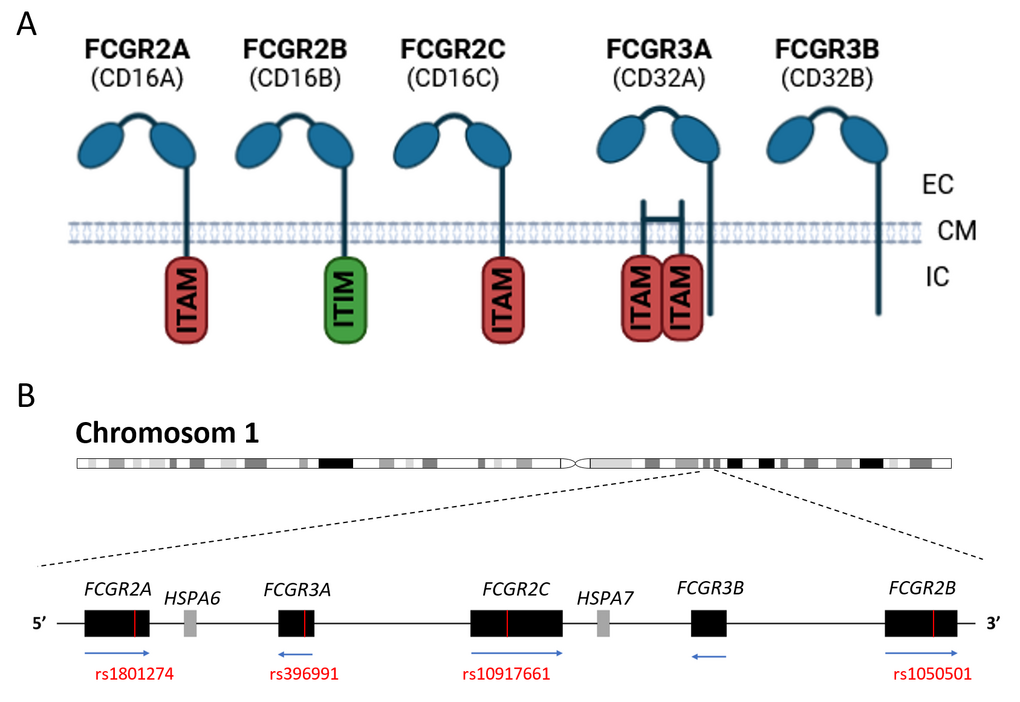Genetic mapping of the Fcγ-Receptor Locus on Chromosome 1
Fcγ-Rezeptors (FCGRs) are an integral part of the human immune response. These receptors are found on a number of different immune cells and interact with the “Fc” parts of bound antibodies. Hence, they act as a sort of tranlslator of a binding of antibodies to e.g. pathogens to subsequent immune reactions, which will then have either a stimulatory or an inhibitory effect. The family of Fcγ-receptors are encoded by 6 genes, FCGR1, FCGR2A-C und FCGR3A & B. We are mainly interested in the genes of the medium-to-low affinity receptors, FCGR2 & 3, which are difficult to map with respect to their architecture and variability due to their homology to each other and their tandem-like position on chromosome 1.
-Tag:
FCGRs with low-to-medium affinity; A) FCGR2 & 3-families with their extracellular (EC) receptor part and intracellular (IC) signal transductions part. ITAM: immune receptor-tyrosine-based activating motif, ITIM: immune receptor-tyrosine-based inhibitory motif; B) FCGR-Locus on chromosome 1q23.3. Red: known SNVs that influence FCGR function.
The polymorphism of the Fcγ-Receptors 2/3 is based on both punctual, Single Nucleotide Variations (SNVs) and structural insertions or deletions of complete genes. A deeper understanding of these FCGR2 & 3 polymorphisms can fundamentally improve genetic diagnostics, because these genes have been demonstrated to be involved in the development and severity of diverse auto-immune diseases.
Briefly put, researching the detailed genetic architecture of the FCGR2 & 3 locus helps us to elucidate its role in auto-immune diseases and to identify diagnostically relevant markers.
Links to interesting publications:


